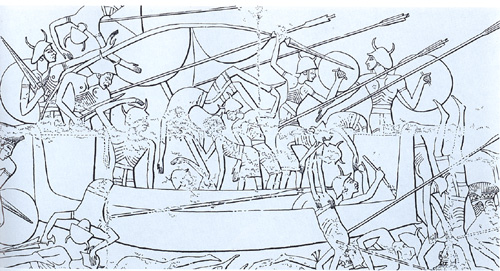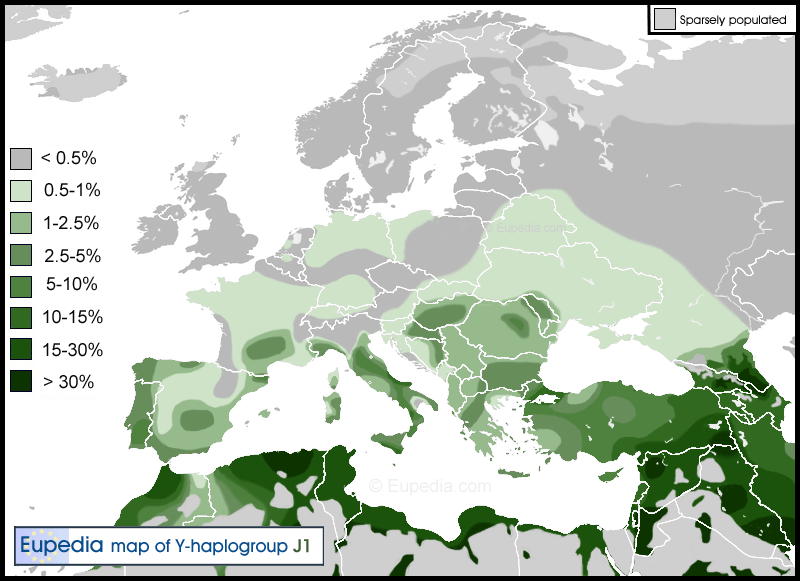The adriatic veneti have nothing to do with the Vistula VeneDi as the Adriatic veneti came from the Este Culture.
The brittany Veneti where of celtic stock and where eliminated by Julius Caesar.
Celtic, Slavic, Italic, Germanic are just cultures/languages...
people change culture/language... around 300 BC or in times that are in time scale of evolution of haplogroup branches like two days ago, latin was spoken only in close proximity of little village called Rome...now languages derived from it are widely spoken in Europe and latin America....
at year 300 AD or 500 AD one can perhaps claim that different Veneti tribes are unrelated (although there are no historic records of them not being related, only recent reconstructions of some modern interpreters of history).. but how can you claim that people related to different Veneti tribes are not related in e.g. 200 BC or 500BC or 1000 BC.... in my opinion, tribal names tend to hold more tightly to genetics than languages...
people keep mixing genetics and culture... but those are measured on totally different time scales... PIE language which was parent language of Celtic, Slavic, Germanic, Italic, Iranian, Indian speakers is estimated to have been single language 3700BC....now in genetic evolution terms that was like last month..
good indication that Veneti were I2a spreading people is that I2a* samples we find only in locations of Veneti in Britanny and Adriatic... that correlation is highly unlikely to be a coincidence...
there is easy scenario of I2a Veneti being PIE people and splitting into several groups from which mixing with local people different branches of IE languages came to existence....
what other tribal name is related to all subgroups of Europe IE languages: Italic, Celtic, Slavic, Germanic?
None!
this is good indication of Veneti being original PIE speakers in Europe
well pay attention to phrasing Jordanes uses
the populous race of the Venethi dwell, occupying a great expanse of land. Though their names are now dispersed amid various clans and places, yet they are chiefly called Sclaveni and Antes.
http://people.ucalgary.ca/~vandersp/Courses/texts/jordgeti.html
this is clear indication that Jordanes was well aware of different Veneti people being related.... but I guess you are trying to tell me that biased 19th century (when history was a weapon)Germanic schoolroom interpreters of long gone history, know better than historic witness (who is btw. of Gothic origin)...
same likeliness of spreading PIE holds for I2a haplogroup. there is I2a1 in south Europe, I2a2 in east Europe, I2b people in central and north Europe.....
I can imagine that in times Veneti entered Europe only other PIE people lived in Scandinavia and Denmark (I1 haplogroup)...
The adriatic Veneti had other venetic tribes as part of their culture, like the Istrians, the Carni in Carinthia, and others, though the carni where a mix of venetic and celtic.
Slovene were in 7th century called Carantanians... they could easily been genetically same people as Carni... whether they were perhaps linguistically same people is unknown...
http://en.wikipedia.org/wiki/Caranthanians
The i2a2 in the veneto was brought in to the area by the Ostrogoths who settled there for over 200 years and thats why you have an architectural style called veneto-gothic
The i2a2 in illyria was also brought in by the goths.
The slavs got this hap group after mixing with the goths who settled in illyria
I did consider this scenario...
But there are no traces of I2a2 in lands conquered by Goths like in south France, Spain... also too little I2a2 in north Italy...
also in Hercegovina frequency of I2a2 is so big, that if they origin from Goths they would have to have lot of Germanic words preserved...but they do not.... if 100 persons settle in village of 1000 people, it will not happen that 1000 people forget completely own language and start speaking with language brought by 100 persons...that just does not happen...
to compare, in Serbia, Macedonia, Albania, Greece there are still villages that speak latin-derived languages....
the Vistula VENEDI are from the baltic around pommerianarea , there brothers where the sklavani who resisted north of old Prussia and started to migrate AFTER the goths migration from Sweden/gotland
no need to give interpretations of historic statements when there is clear statement you make allusions to...
Within these rivers lies Dacia, encircled by the lofty Alps as by a crown. Near their left ridge, which inclines toward the north, and beginning at the source of the Vistula, the populous race of the Venethi dwell, occupying a great expanse of land. Though their names are now dispersed amid various clans and places, yet they are chiefly called Sclaveni and Antes. (35) The abode of the Sclaveni extends from the city of Noviodunum and the lake called Mursianus to the Danaster, and northward as far as the Vistula. They have swamps and forests for their cities. The Antes, who are the bravest of these peoples dwelling in the curve of the sea of Pontus, spread from the Danaster to the Danaper, rivers that are many days' journey apart. (36) But on the shore of Ocean, where the floods of the river Vistula empty from three mouths, the Vidivarii dwell, a people gathered out of various tribes. Beyond them the Aesti, a subject race, likewise hold the shore of Ocean.
http://people.ucalgary.ca/~vandersp/Courses/texts/jordgeti.html
Jordanes - the origin and deeds of Goths
Aesti are Balts.... no reason to equate Balts with Venedi as Jordanes would mention that Aesti origin from race of Veneti as well.... but Aesti have not much I2a, do they?
Jordanes says it clearly...around Vistula lives populous race of Vene
thi now scattered among many tribes and clans chief of them being Sclaveni and Antes
thus Vistula Vene
thi are same as later Sclaveni and Antes, and later Slavs or part of them...
Venedi, Celtic, vistula, and Adriatic Veneti, Vandali.... perhaps spoke different languages but preserved same tribal name... do you know Finish name for Russians? it is
Venäläiset
if proto-Slavic people are not Venetic race as claimed by Jordanes, how do you explain the following picture (showing clines in Europe based on genetics of blood polymorphisms), knowing that historic Slavs never settled in north Italy (wider Veneti area) or south Spain (Andalusia named by Vandali)
http://dienekes.blogspot.com/2009/10/migrationism-strikes-back.html




